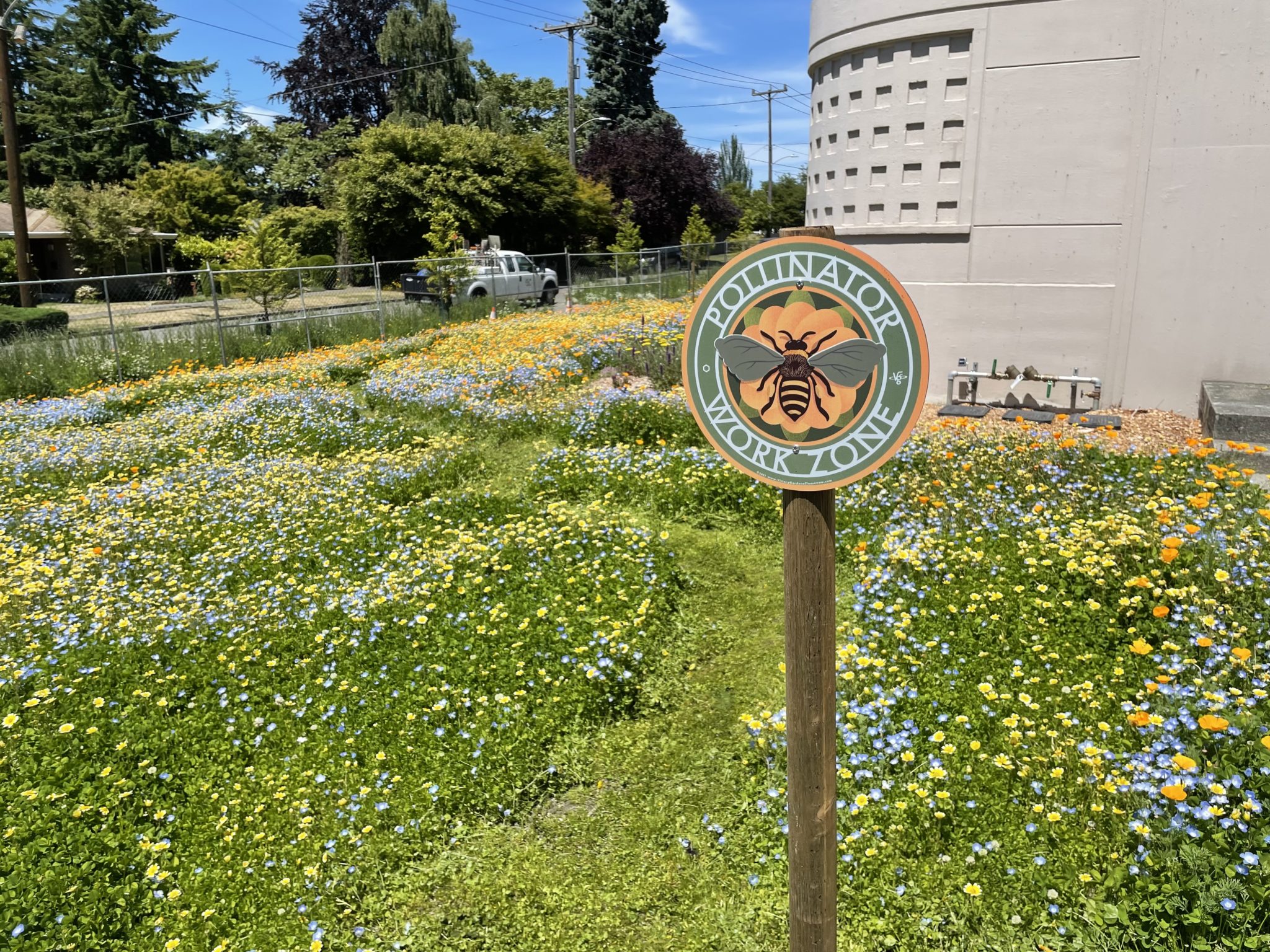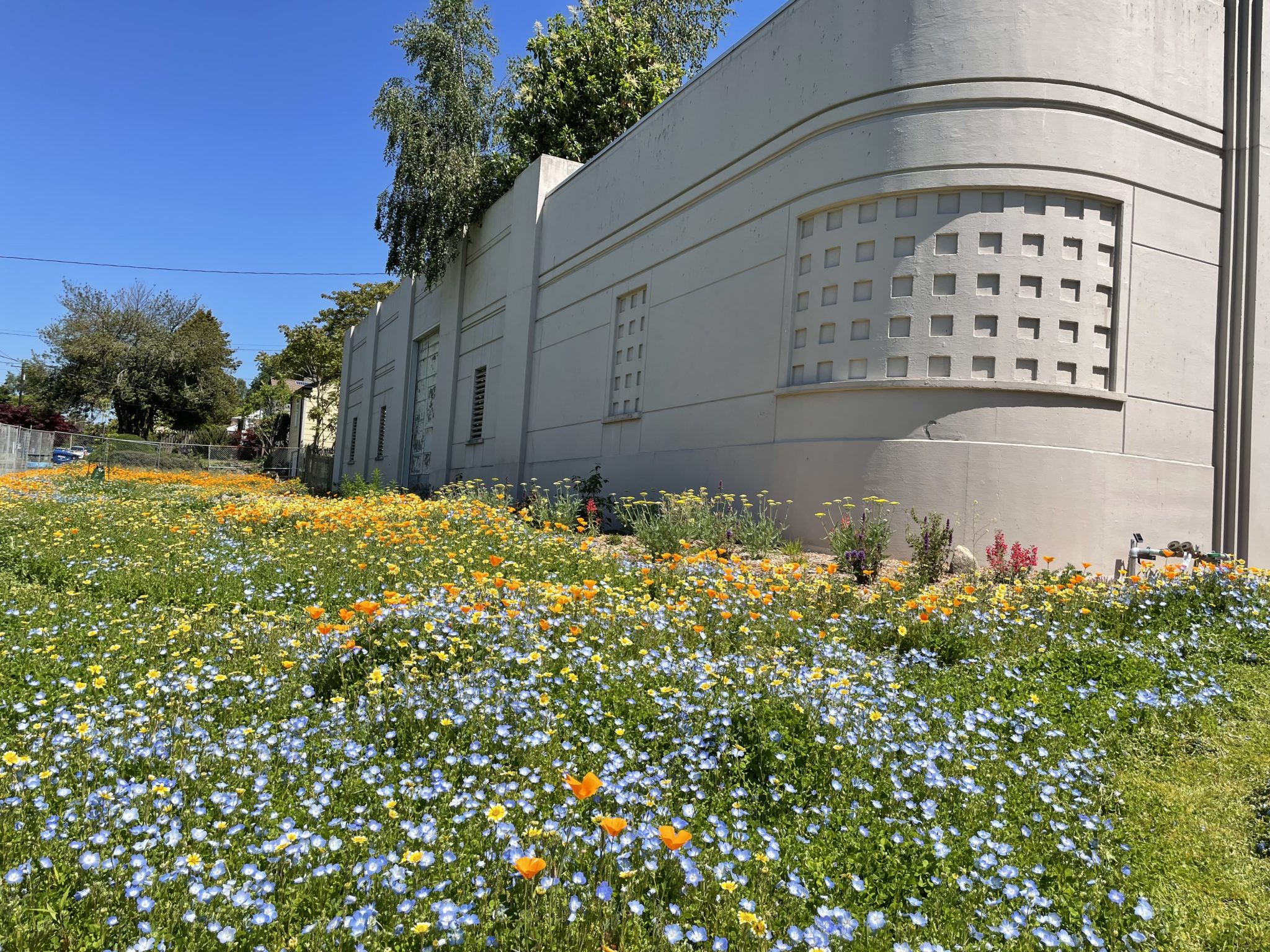
Bees, wasps, butterflies, moths, bats, birds, and beetles: pollinators are critical to our ecosystem. They help ensure that plants and crops can grow and thrive, but they need our help. Pollinators are in decline. This is a serious concern for our planet’s future as pollution, pesticides, climate change, and urbanization threaten their natural habitats. In fact, more than half of the bee species in North America are in decline, with 1 of every 4 at risk for extinction.
At City Light, we’re working to help reverse pollinator decline by maintaining gardens across our service territory. Let’s learn about how you can make your own pollinator garden right in your backyard to give bees and other pollinators a helping hand.
How a pollinator garden works
There are more than 200,000 species of pollinators. Each plays an invaluable role in our environment by moving pollen from a flower’s stamen to the stigma. This is what allows fertilization to occur and helps continue the plant’s lifecycle so it can produce its own flowers and fruit.
Why is this important? The majority (90%) of wild plants and leading global crops (75%) rely on the help of animals to aid in pollination. And one third of every bite of food people eat depends on pollinators.
Planting for pollinators
The key to creating your own pollinator garden is variety. When choosing which plants to add to your garden, look for a hearty, diverse mix with varied bloom times to keep pollinators visiting throughout the season. You can also attract an increased number and type of pollinators with differing flower color, fragrance, and height. Planting herbs and annuals can also improve the impact of your pollinator garden. Also, common kitchen herbs like oregano, garlic, chives, mint, parsley, and lavender—along with the popular sunflower—help support bees and butterflies.

Growing with the PNW in mind
In the Pacific Northwest, our region has desirable conditions for gardens. A temperate oceanic climate allows us to grow a dynamic plant palette, veggies, and ornamentals. Our USDA Plant Hardiness Zone is 7-9. Here are a few native plants that make ideal additions to your pollinator garden.
- Early Bloomers (February to June): Serviceberry, Red Flowering Currant, Pacific Dogwood, Salmonberry, Common Camas, Bleeding Heart, and Henderson’s Shooting Star, Indian Plum
- Mid-Season Bloomers (April to August): Baldhip Rose, Red Elderberry, Evergreen Huckleberry, Orange Honeysuckle, Black Gooseberry, Red Columbine, Fringecup, Yarrow
- Late Bloomers (June to October): Coreopsis,\Helenium, Hyssop, Broadleaf Lupine, Oregon Stonecrop, Harebell, Fireweed, Cascade Penstemon and Aster
We hope you found inspiration while reading this and are ready to take the next step with your own pollinator-friendly habitat at home. For a more in depth look at planting for pollinators in our region, check out the Pollinator Alliance’s guide to the Pacific Lowlands, of which the greater Seattle region is a part of.